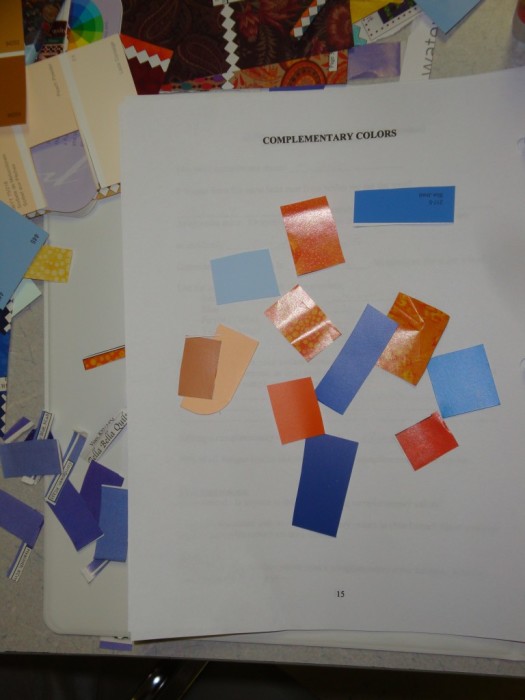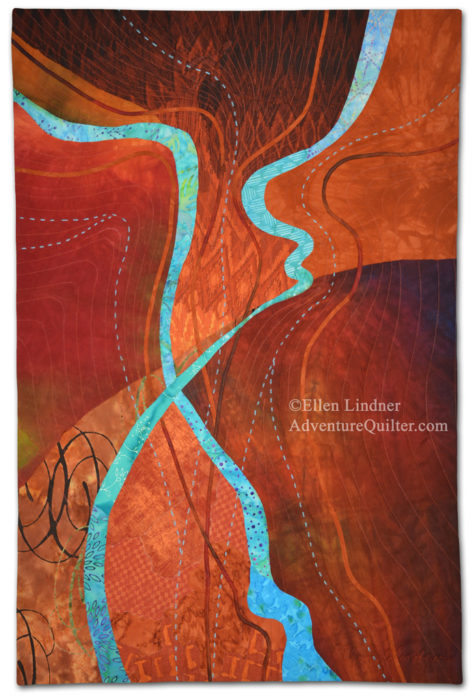You know about complementary colors, right? Colors that are in opposite locations on the color wheel?

Like blue and orange.

Since rust is a version of orange, this quilt uses complementary colors.
(Or maybe it’s red-orange and blue-green, which are also complementary.)

Deliberation
But, maybe you’re not too comfortable with a color wheel, or how to really USE complementary colors together. Here are few key points:
– Each swatch on the color wheel represents an entire color family. That is, EVERY version of that hue/color. So every blue is complementary to every orange.
– Adding the complementary color always adds drama.
– It’s best to use more of one color than the other.
This quilt uses the complementary color scheme of red and green. But, notice there’s more green than red. And in the photo above, there’s more rust/orange than blue.

Cosmo Boogie
Want to learn more? See these two articles about color, as previously published in Quilting Quarterly:
Color, Part One
Color, Part Two
Or, to master this concept and many more, check out my eBook on color.

Ellen Lindner
P.S. I have a whole section on my website with helpful articles. Click on one of the green categories to see what it has to offer.

Thank you, Ellen, for showing that every blue in the blue family is the compliment of every orange in the orange family. Color wheels show colors at their full strength, so it’s easy to only imagine a primary saturated blue opposite a primary saturated orange, and to put them 50/50 in the composition. Quilt making is an adventure in color—
Thanks for your comment, Wendy. You’re right about the color wheel confusion. Most people think it’s about as challenging as a slide rule, but it’s actually very useful!
Such concise, helpful info! Thank you, Ellen.
You’re welcome, Kara. I’m glad you found it useful.